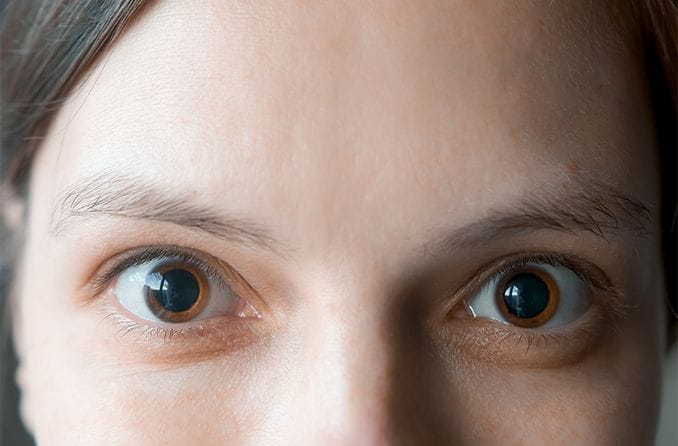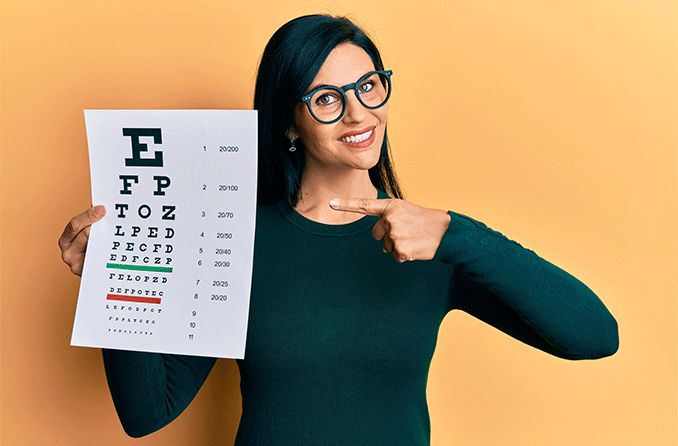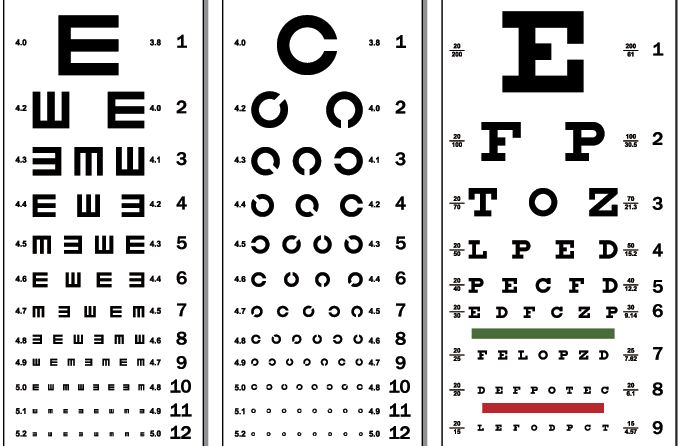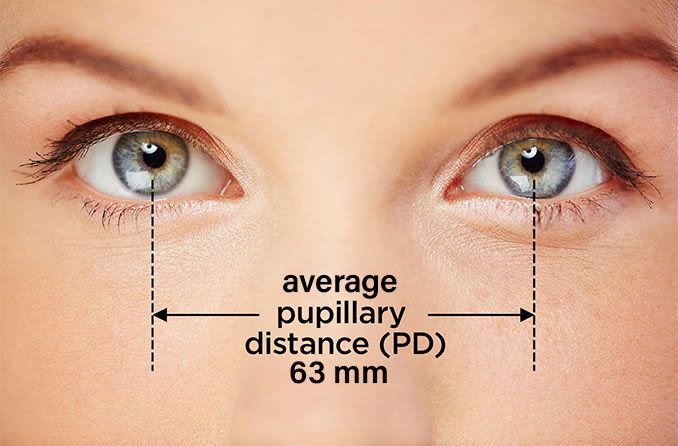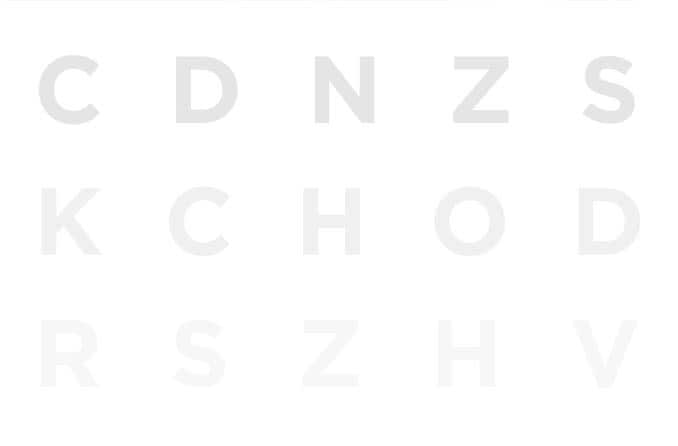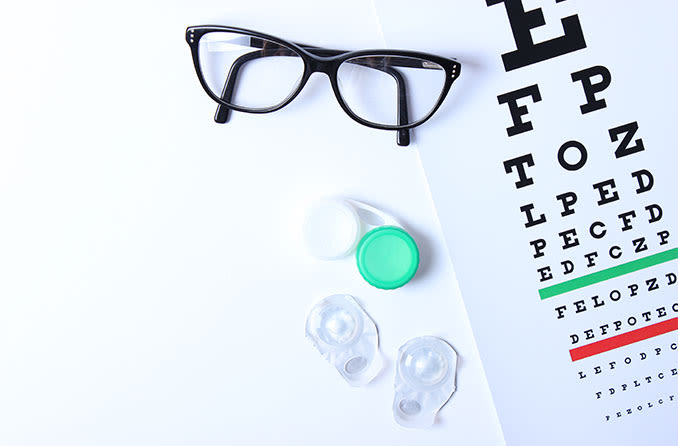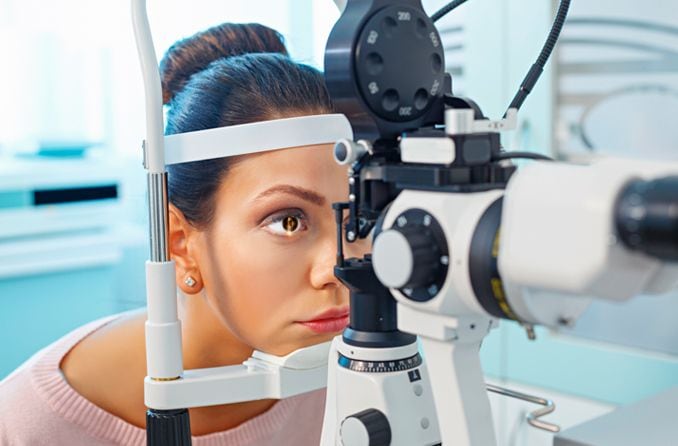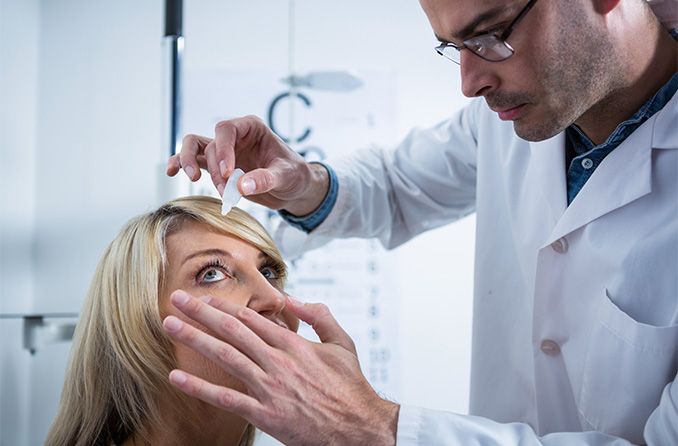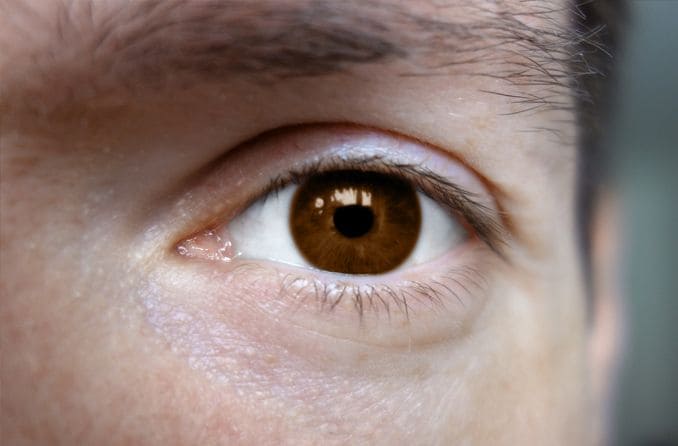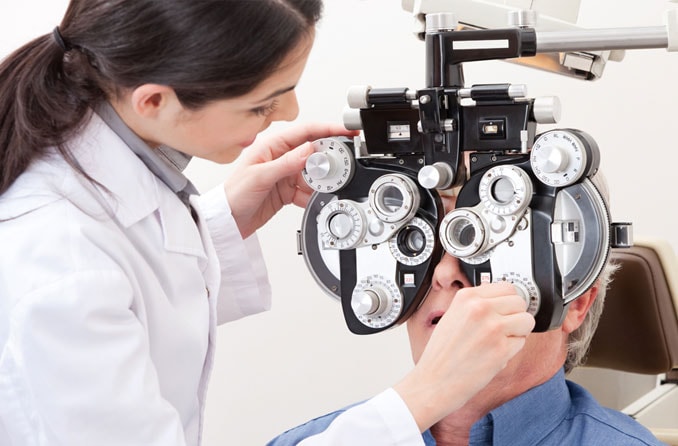Why pediatric eye exams are essential
Clear vision is critical for a child’s development and plays an important role in their ability to learn, interact with others and confidently explore the world around them. Pediatric eye exams check the overall health and function of a child’s eyes and how well they can see.
Since most learning occurs through vision, it is essential for success in school. Vision exams and screenings help identify problems early on when treatment is most effective. Many children experience undiagnosed vision problems that can significantly impact their lives.
This is highlighted by the fact that:
- One in four children in the United States has some kind of vision issue, but many of these problems go undetected and untreated.
- Research indicates that as many as 40% of students diagnosed with a learning disability may actually have an underlying vision problem instead.
- Around 60% of students who have problems with learning may have vision problems that haven't been diagnosed or treated.
A vision screening is a quick check of a child’s eyesight, often done by a school nurse or pediatrician. Screenings help identify children who might need a more thorough exam along with follow-up eye care and treatment.
A key objective of vision screenings is to identify children at risk of amblyopia, which can cause permanent vision loss. This condition is often referred to as "lazy eye." Screenings also check for issues with eye alignment and refractive errors, which include nearsightedness, farsightedness and astigmatism.
Screenings do not take the place of a full eye exam by an eye doctor, however. Comprehensive eye exams check much more than vision screenings do. Vision and eye health problems can develop in children and affect their vision. Regular eye exams help detect and treat these issues early, ensuring clear vision and healthy eyes.
When should kids get eye exams?
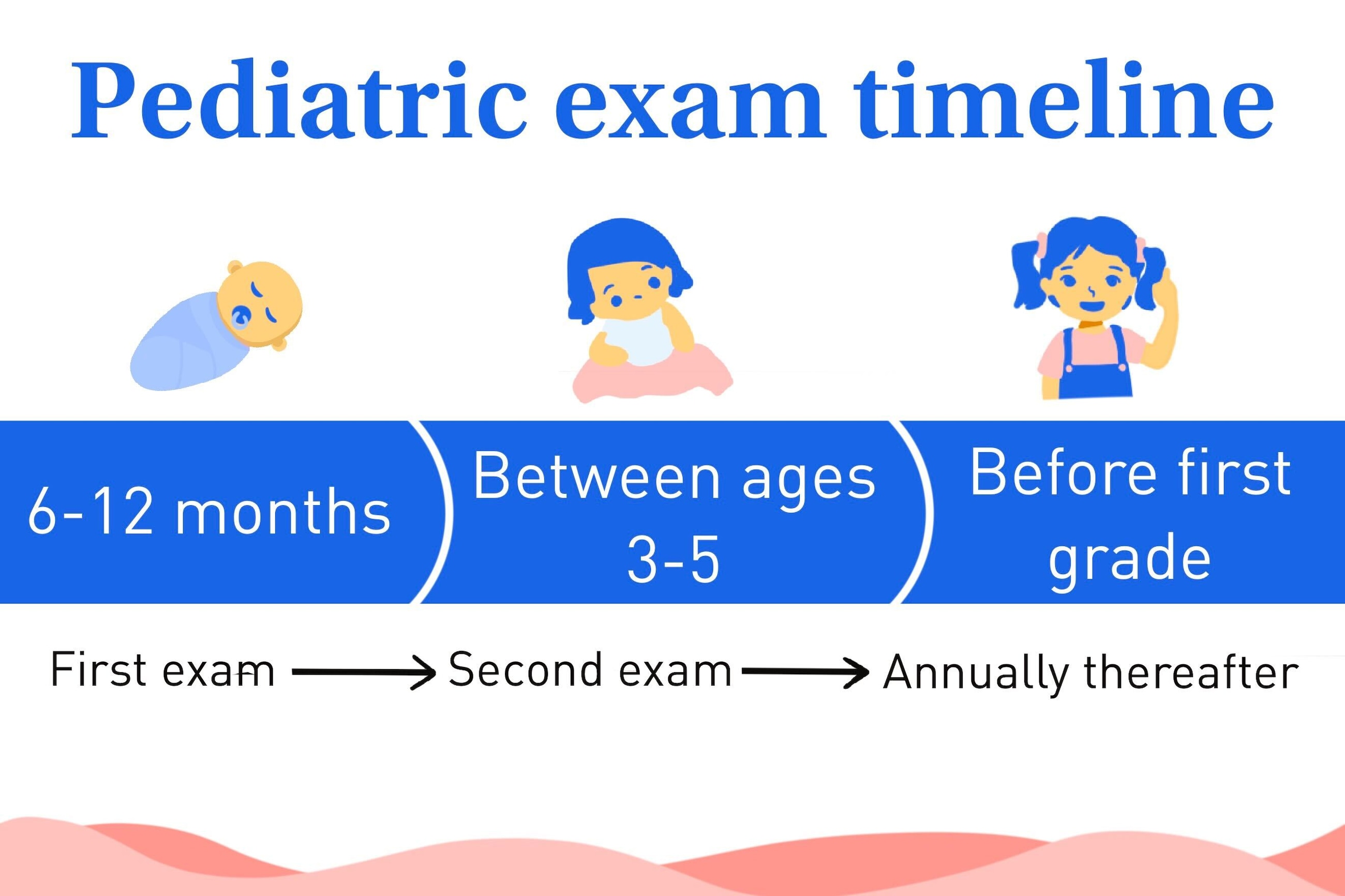
Comprehensive eye exams are the standard for evaluating children’s eye health. The American Optometric Association recommends an eye exam:
- Between the ages of 6 months and 12 months
- Between the ages of 3 and 5
- Before starting first grade and every year during the school years or as recommended
A complete pediatric eye exam can include:
- Medical history and family history – Information about past eye conditions, general health and school activities
- Visual acuity – How sharp their vision is
- Refractive error – What eyeglass prescription they may need
- Depth perception – How well they see in three dimensions
- Eye movement coordination – How well their eyes work together
- Focusing ability – How well they can see up close
- Eye alignment – How well the eyes line up
- Color vision – Whether there are any color vision deficiencies
- Intraocular pressure – The pressure inside the eye
- Visual field testing – The total area that can be seen when looking straight ahead
- Eye health – Examination of the structures of the eyes
Below are some tests commonly performed for each age group. The specific tests conducted during the examination will be tailored to the individual needs of each child.
Infants (6-12 months)
Infants are screened at birth for congenital issues such as cataracts, glaucoma, birth defects and infections. During check-ups from birth to 6 months, the doctor will examine basic visual functions. This includes:
- How well the eyes are aligned
- How well the eyes track objects
- How the pupils respond to light
- How the eyes work together
They will ask about any family history of childhood eye conditions, like crossed eyes or lazy eye. Parents should look for milestones such as whether their baby is focusing on faces and following objects.
Toddlers (1-3 years)
For toddlers who aren’t talking yet, the doctor will check if each eye can focus on and follow objects. A child around 2 or 3 years old may be able to look at charts with pictures or shapes (like apples or circles) and point to what they see. Matching cards can help them show their answers without having to speak.
The doctor will also look for strabismus, which refers to a misalignment of the eyes. They can check for refractive errors with instruments that don't require your child to talk. An examination of the overall health of the eyes will also be conducted.
Preschoolers (3-5 years)
Preschoolers are often able to recognize pictures or letters on a visual acuity chart. If needed, their refractive error can be checked with instruments that don't require a response. The doctor will also check for strabismus and examine the health of the child’s eyes.
This is an important age for detecting and correcting vision problems. Schedule your child's eye exam before preschool to catch any issues early.
School-age kids (6+ years)
Good eyesight is crucial for school success, impacting reading and academic performance.
Vision can change quickly as children grow. Ideally, schoolchildren should have a comprehensive eye exam every year. These annual exams help monitor how a child’s vision is changing. The exam will include checking vision, refractive error, eye alignment and eye health.
The use of digital devices among school-aged children is on the rise. Studies suggest there may be an association between indoor near-work activities (like computer use) and myopia. This makes it essential to check for nearsightedness regularly.
With early detection, myopia control strategies can be implemented. These can potentially slow down the progression of myopia and include:
- Multifocal glasses and multifocal contact lenses
- Peripheral defocus glasses and contact lenses
- Low-dose atropine drops placed in the eyes at bedtime
- Orthokeratology (ortho-k) specialty contacts, designed to be worn overnight
If your child is nearsighted, speak to your doctor about the latest strategies for myopia control.
What happens during a pediatric eye exam?
A pediatric eye exam is a thorough evaluation of a child’s vision and overall eye health. The tests are tailored to the child’s age and developmental stage.
Vision screening tests
Vision screening tests use age-appropriate charts and instruments.
Visual acuity
A visual acuity check tells the doctor how sharp your child’s vision is. The technique can vary based on age and development.
- Infants – Infant vision tests can be performed by assessing whether babies prefer patterned images over simple gray ones.
- Young children – For young children or those who can't yet read, doctors might use special charts with pictures or shapes. For example, the LEA Symbols chart has a house, an apple, a circle and a square arranged in different combinations. Each line has symbols that are smaller than those on the line above.
- Older kids – Once they know letters, kids can use standard letter charts such as the Snellen eye chart. This chart shows rows of capital letters, each of which contains smaller letters.
Refractive errors
An instrument called a phoropter is typically used to determine refractive errors. It holds different lenses for a patient to look through during their exam.
The phoropter will be positioned before your child. They will then be shown lenses with varying powers. The lenses that provide the clearest vision will indicate your child’s prescription.
Instruments that do not need a response can be used for young children. These include auto-refractors and a hand-held instrument called a retinoscope.
Color vision
Some children have trouble seeing certain colors. A popular color vision test uses special plates with colored dots and hidden numbers.
Color vision issues are more common in boys, especially red-green color deficiency.
Depth perception
Problems with depth perception can affect sports, reading and everyday activities. Tests like the Titmus Fly test use 3D images to see how well both eyes work together. In this test, the fly's wings should appear lifted over the page.
Visual field
Confrontation visual field testing is simple. The child covers one eye and looks straight ahead. The examiner then moves an object from the side. The child says when they can see the object. This test helps find any areas where the child has trouble seeing.
Eye health evaluation
A complete eye exam assesses the health of the eyes. During the health evaluation, the doctor will use bright lights and special instruments. They will examine the outside and inside structures of the eye. This includes examining the:
- Retina – The light-sensitive tissue at the back of the eye
- Optic nerve – The nerve that relays light signals from the eye to the brain
- Pupil – The black circle inside the colored part of the eye
- Crystalline lens – A clear structure in the eye that helps your eyes focus
The doctor will apply eye drops to dilate the pupil for a clear view of the retina. They will check for signs of cataracts, a clouding of the crystalline lens. They will also check for signs of glaucoma, a condition that damages the optic nerve.
Eye movement and coordination
Good eye coordination is necessary for activities such as reading and playing sports. During the exam, the doctor will check for:
- Smooth, coordinated eye movements
- How well the eyes converge (look inward) when focusing up close
- How effectively the eyes follow moving objects
- How well the eyes align with one another
To diagnose issues such as strabismus, specific tests are conducted, including covering one eye at a time to check for alignment. The ability of the eyes to converge is important for tasks like reading and other close work.
Difficulty with convergence is called convergence insufficiency. It is evaluated by checking how well your eyes work together to focus on something up close.
Common vision problems found in exams
During a pediatric eye exam, an eye doctor will check for common childhood eye problems. These issues can impact a child’s vision and development.
Myopia, hyperopia and astigmatism are usually corrected with glasses or contact lenses. Other issues may require interventions, such as an eye patch or vision therapy.
Myopia (nearsightedness)
Children with myopia see close objects clearly but struggle to see distant objects, like the front of the classroom. Myopia is becoming more common, especially with increased screen time and less outdoor play.
Hyperopia (farsightedness)
Farsighted children may see distant objects better than close ones. High hyperopia can cause blurry vision, headaches or eye strain. If not corrected in time, it can lead to amblyopia.
Astigmatism
This is when the front of the eye is shaped more like a football than a basketball, causing blurred or distorted vision at all distances. It can occur with myopia or hyperopia.
Amblyopia (lazy eye)
This is when vision in one eye is reduced. Less commonly, both eyes are affected. It occurs because communication between the eye and brain does not develop properly. It can be caused by issues such as strabismus, refractive errors or cataracts. Treatment may include patching the stronger eye, special glasses or eye drops.
Strabismus (crossed eyes)
This is a condition in which one eye points in a different direction than the other. Amblyopia may result if the brain ignores input from one eye. Treatment can include glasses, vision therapy or surgery.
Convergence insufficiency
This is when the eyes have trouble working together for close tasks. It can cause double vision or headaches, especially during reading. Convergence exercises are a type of vision therapy. These exercises improve the ability to focus on objects near and far.
Congenital disorders
Some children are born with eye disorders. These include conditions such as cataracts, glaucoma or an area of missing tissue. Early detection is key for the treatment of these conditions.
Symptoms of vision problems in children
Children may not complain about vision issues, so parents should watch for the following signs and symptoms:
- Squinting, covering an eye or tilting the head to improve vision
- Frequent headaches or eye rubbing
- Holding books or devices very close or sitting very near to the TV
- Difficulty keeping their place when reading
- Quickly losing interest in games and other activities
- Avoiding activities that require good vision, such as reading and sports
If you notice your child displaying these or other eye-related symptoms, schedule an appointment with their eye doctor.
LEARN MORE: These signs may show your child has a vision problem
Preparing your child for an eye exam
Help ease your child's anxiety before their eye exam by preparing them for what to expect. Here’s how to improve their experience:
- Explain the process in kid-friendly terms – Start the conversation early. Parents can prepare their children by explaining ahead of time what the eye doctor will be doing.
- Bring their favorite toys – Having a familiar item, such as a favorite toy, can provide comfort to a child during their eye exam.
- Address their fears – Certain tests require eye drops and bright lights. Parents can reassure their child by explaining why they are needed and what they should feel like.
- Prepare them emotionally – Maintain a positive attitude before, during and after the exam. Offer gentle encouragement and guide the child during the exam to reduce stress.
Choosing a pediatric eye care specialist
Your child will typically see a general practice eye doctor or a pediatric specialist for a comprehensive eye exam.
Most general practice eye doctors are optometrists. They provide a large portion of primary eye care services by examining, diagnosing and treating many eye conditions.
A pediatric ophthalmologist is a medical doctor (MD or DO) with specialized training in children's eye care. They can address a variety of eye issues, including performing surgeries. A board-certified pediatric ophthalmologist has met certain standards of expertise in the field.
Similarly, a pediatric optometrist is a doctor of optometry (OD) who has a special interest and expertise in children’s eye conditions. They have additional education and experience in the field and they enjoy working with kids. Their office, instruments, equipment and service offerings were selected and designed with kids in mind.
Choosing the right specialist involves finding someone with experience in examining children. A child-friendly office and a welcoming staff will make the experience more comfortable for your child.
To find out how much a pediatric eye exam costs, call the office to determine their fees.
What to do after the exam
Pediatric eye exams are tailored to your child's age and abilities. Eye doctors use language and tools that are friendly and engaging for kids. After the exam, parents can take the following important steps to maintain their children's eye health:
- Understand their prescription – Learn what your child’s prescription means and how often glasses or contacts should be worn.
- Schedule follow-ups – Follow the doctor’s recommendations for future visits and referrals, such as for vision therapy.
- Monitor progress – Watch for signs of improvement or new symptoms.
- Communicate with their school – Let teachers know about your child’s vision needs.
- Set up a well-lit study area – Ensure healthy eye habits, such as using lighting that keeps their eyes comfortable.
- Limit screen time – Set limits on digital device use and educate them about the 20-20-20 rule for easing eye strain.
- Protect their eyes – Get shatterproof polycarbonate lenses for their eyeglasses. Also, make sure they wear sunglasses outside with 100% UVA-UVB lens protection.
- Encourage outdoor activities – Encourage outdoor play, which may help slow myopia progression.
- Ensure they get enough sleep – Help your child get enough sleep so their eyes can recover from the day.
- Feed them a balanced diet – Ensure your child consumes a diet that provides complete nutrition. This includes fruits, leafy greens, healthy proteins and omega-3 fatty acids.
Scheduling a comprehensive eye exam is one of the best ways parents can support their child’s health, learning and development.
READ NEXT: How to schedule a pediatric eye exam near you

